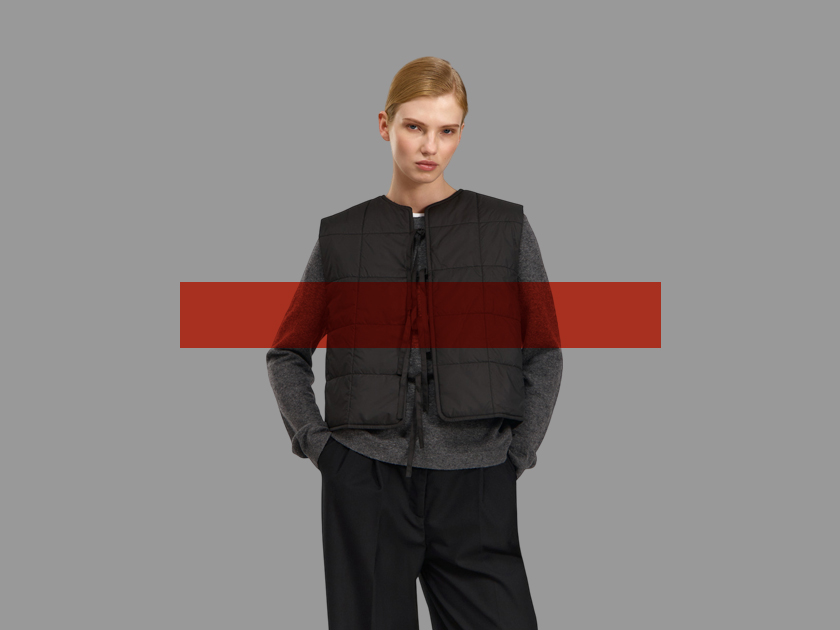We have not yet entered the door of Transfo – a cultural center and emergency accommodation located in the 10th arrondissement of Paris – when our eyes rest on a life-size photograph of three tall blocks with bright colors and graphic patterns. These are solidarity lockers, decorated by the artists Stayreo and Matrupix. They saw the light in 2018, in the streets of Montreuil, on the initiative of Emmaüs Alternative.
Device conceived by architect Duarte Paiva in Lisbon three years earlier, solidarity luggage storage refers to free and accessible lockers. Installed in the streets or in public places, they allow the homeless to leave their luggage, which contains their entire life, and regain a sense of security.
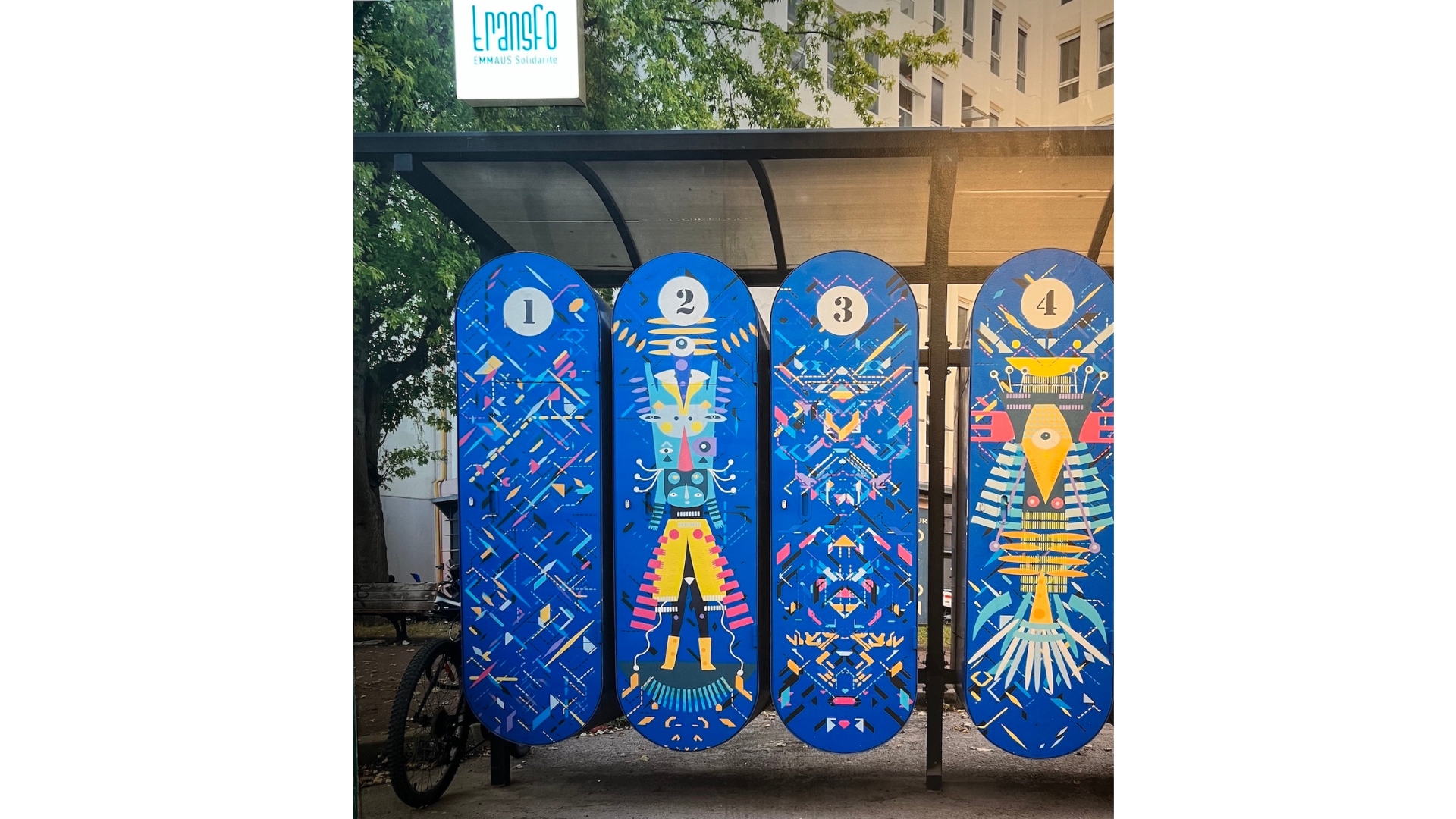
These lockers flourished near the metro, in Montreuil, then in Clermont-Ferrand, Annecy and soon in other cities of France. This is what we learn from the report by journalist Isabelle Rey-Lefebvre, a specialist in the homeless, who collected the testimonies of interested people to contextualise this exhibition.
A locker of your own
“Last night, for the third time, they stole my suitcase with all my things” says Christophe. Reading the report you understand the importance of the concept of solidarity baggage. Be able to protect your personal belongings – sleeping bag, water bottle, cutlery, administrative documents, clothes, etc. – it is essential. Both from a practical point of view – losing your identity documents can be a tragedy – and psychologically. Having a dedicated place allows you to regain a feeling of privacy.
The exhibition is spread over three floors: on the ground floor, Isabelle Rey-Lefebvre’s reportage accompanies a series of photos taken by photographer Nicolas Krief, taken in the solidarity luggage storage in the autumn of 2023. A man looks at his wrinkled trousers in a photo, one person is fixing their hair in the designated toilet areas, another is wearing a sweatshirt that covers his face.
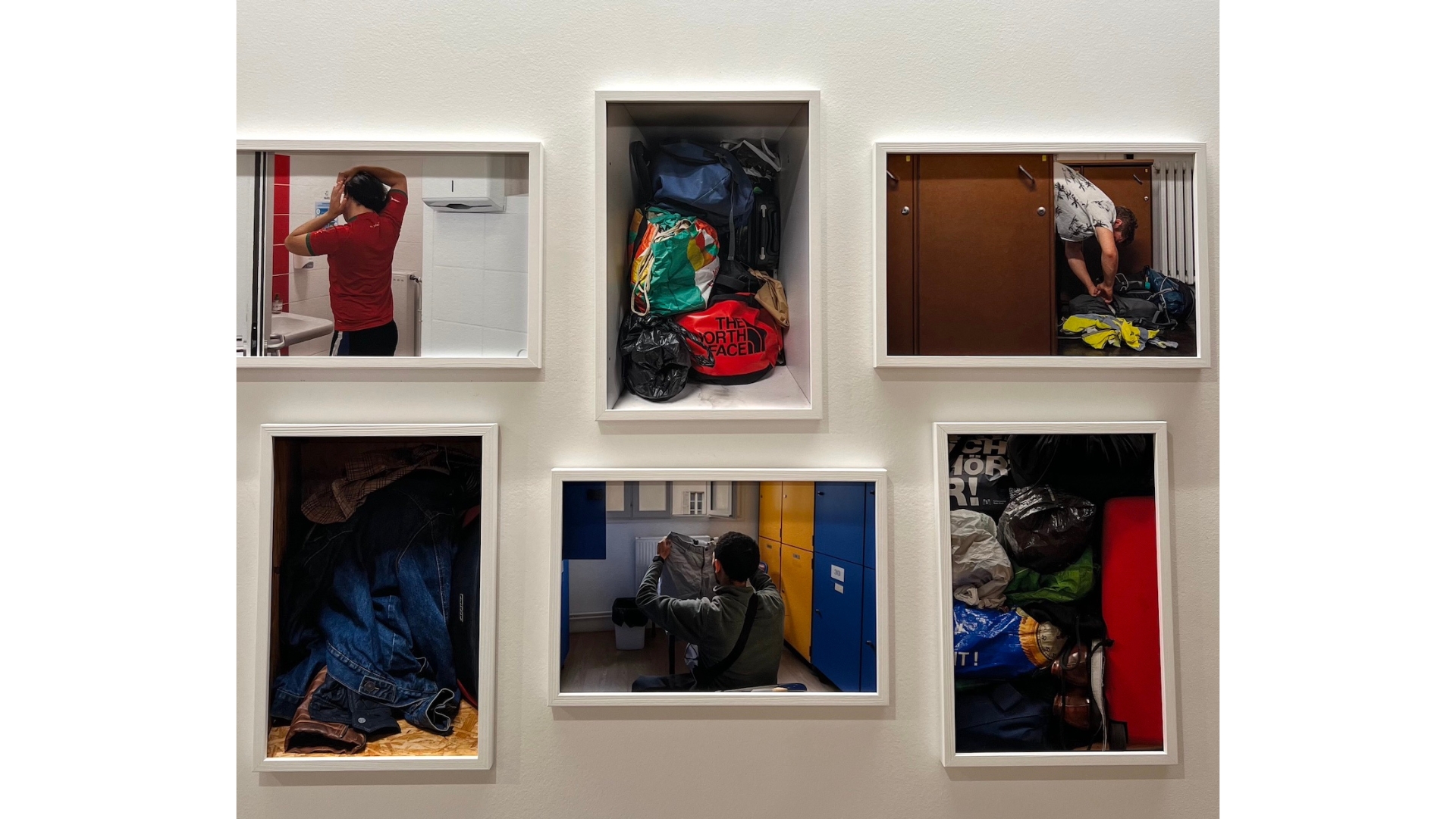
Faces do not appear, to preserve anonymity. Homeless women, particularly vulnerable, refused to be photographed. No scenography or accent lighting. Dragging luggage across Paris is one of the difficulties faced by homeless people every day. This series of photos shows a moment of respite. Unless you are deprived of it, you cannot imagine how important it is to have a place of your own.
The “personal affairs” of Annette Messager
The first floor is dedicated to Annette Messager’s installations. This recognized visual artist presents a selection of historical and unpublished works around her personal effects, weaving a dialogue with the theme of solidarity baggage. Since the 1970s, Annette Messager has created, using different materials, work focused on intimacy, the body or the female condition.
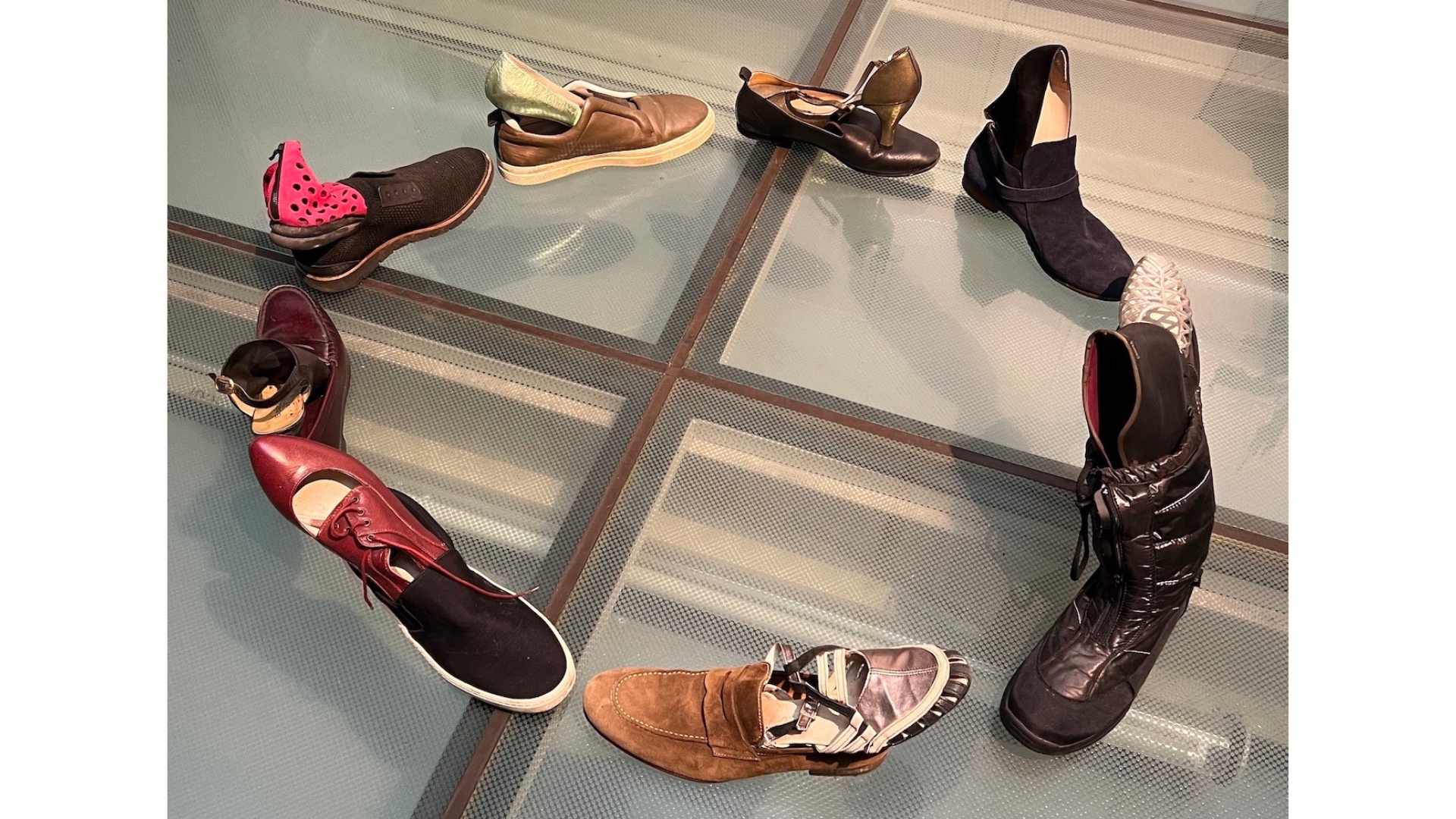
Among the works on display, a round of 18 shoes that belonged to her and her late husband, Christian Boltanski, represent the notion of a couple, in different stages of life or in different states. Some shoes fit together perfectly, others don’t seem like they were “made for each other”!
The most monumental work, “Spleeping pacific” is taken from his series of wall sculptures “Sleeping songs”. It consists of a sleeping bag (the artist’s recycled down jacket), an essential item for those living on the streets. Arranged in an open manner and evoking the shape of a vulva, it is surmounted by three black hands. During her presentation in 2017, Annette Messager explained: “
Down jackets, sleeping bags, down jackets and down jackets are recent, warm, soft, protective cocoons. They take all kinds of shapes and accompany us day and night, on our clothed or naked bodies. […] They can evoke sleep, dreams or nightmares, love, sexuality or isolation.”
With this series Annette Messager was already interested in precarious workers. Seeing it displayed in this place that is both social and cultural makes sense. Another of her works, the crosses placed on the wall, evoke ex-voto objects, offerings made to a God in places of prayer or pilgrimage. Here they contain a word repeated ad vitam, such as “support”, “cunning”, “fear”, “favor”… Human states that can be interpreted as those through which people living on the streets pass.
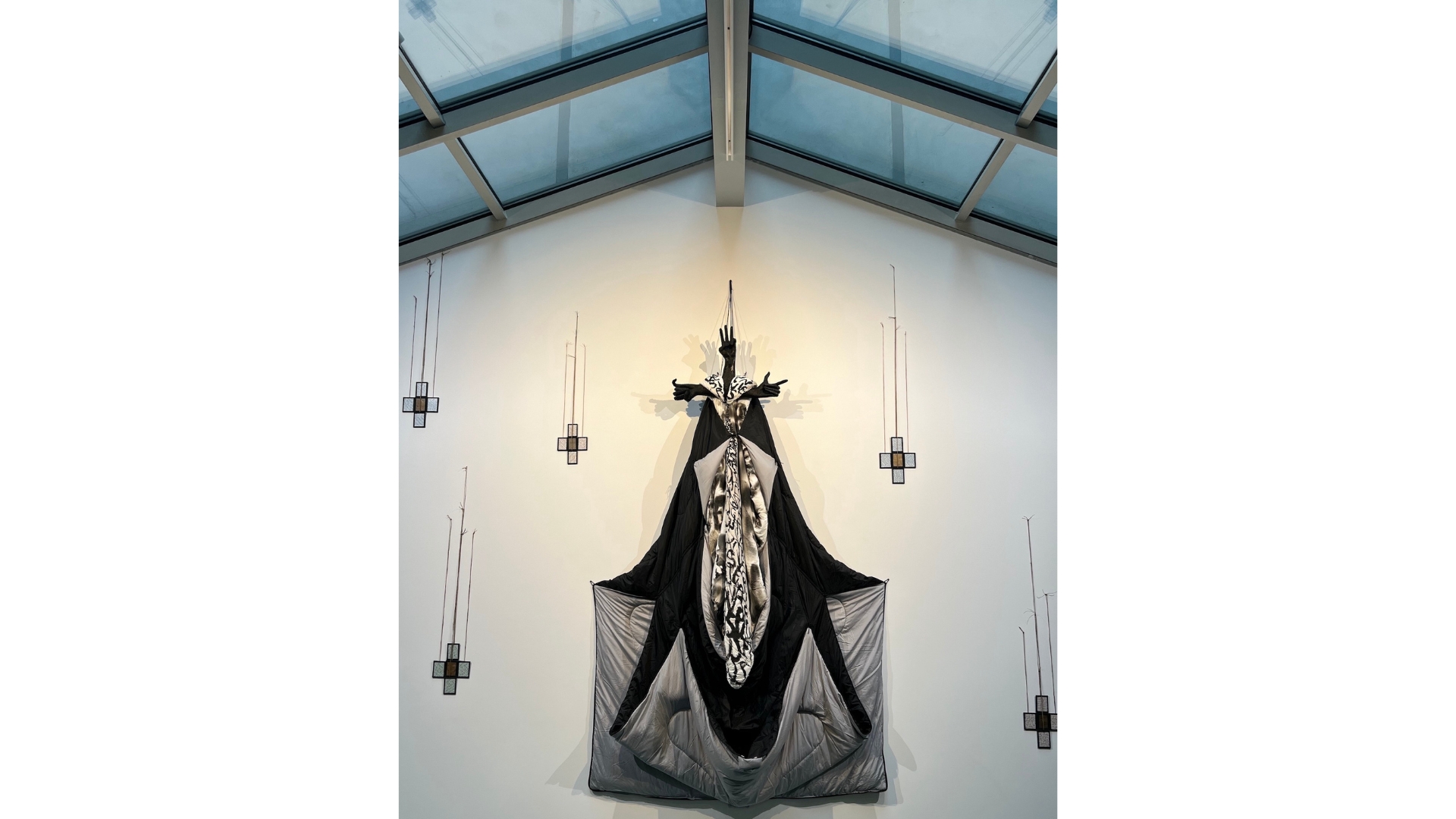
The latest installation, “Le Manteau”, displayed in the basement, can be seen below the 1st floor, through a glass roof. Also belonging to the artist, it is arranged with small pebbles, a reference to a Jewish custom, which consists of placing a stone on a grave as a sign of respect for the deceased person.
The documentary part of the exhibition offers the opportunity to discover audiovisual works and recommends books that particularly evoke precariousness through the prism of gender and the violence experienced by homeless women. A chilling fact: 90% of them are victims of sexual violence. The other three floors of the site are emergency accommodation. So those who are interested will be able to come and discover this exhibition and see themselves represented through an artistic approach.
Add Madmoizelle to your favorites on Google News so you don’t miss any of our articles!
Source: Madmoizelle
Mary Crossley is an author at “The Fashion Vibes”. She is a seasoned journalist who is dedicated to delivering the latest news to her readers. With a keen sense of what’s important, Mary covers a wide range of topics, from politics to lifestyle and everything in between.


